Related Research Articles

Ancient Egypt was a civilization of ancient North Africa, concentrated along the lower reaches of the Nile River, situated in the place that is now the country Egypt. Ancient Egyptian civilization followed prehistoric Egypt and coalesced around 3100 BC with the political unification of Upper and Lower Egypt under Menes. The history of ancient Egypt occurred as a series of stable kingdoms, separated by periods of relative instability known as Intermediate Periods: the Old Kingdom of the Early Bronze Age, the Middle Kingdom of the Middle Bronze Age and the New Kingdom of the Late Bronze Age.

Diana is a goddess in Roman and Hellenistic religion, primarily considered a patroness of the countryside, hunters, crossroads, and the Moon. She is equated with the Greek goddess Artemis, and absorbed much of Artemis' mythology early in Roman history, including a birth on the island of Delos to parents Jupiter and Latona, and a twin brother, Apollo, though she had an independent origin in Italy.
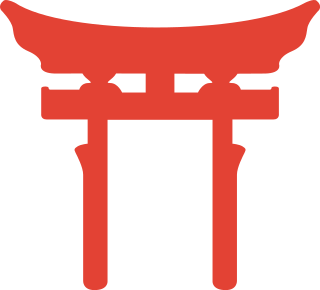
Kami are the spirits, phenomena or "holy powers" that are venerated in the religion of Shinto. They can be elements of the landscape, forces of nature, as well as beings and the qualities that these beings express; they can also be the spirits of venerated dead people. Many kami are considered the ancient ancestors of entire clans. Traditionally, great or sensational leaders like the Emperor could be or became kami.
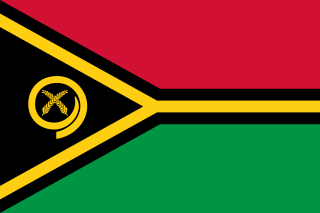
Vanuatu, officially the Republic of Vanuatu, is a Pacific island country located in the South Pacific Ocean. The archipelago, which is of volcanic origin, is 1,750 kilometres (1,090 mi) east of northern Australia, 540 kilometres (340 mi) northeast of New Caledonia, east of New Guinea, southeast of the Solomon Islands, and west of Fiji.
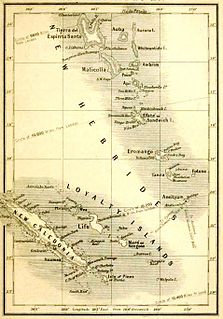
The history of Vanuatu begins obscurely. The commonly held theory of Vanuatu's prehistory from archaeological evidence supports that peoples speaking Austronesian languages first came to the islands some 3,300 years ago. Pottery fragments have been found dating back to 1300 BC. What little is known of the pre-European contact history of Vanuatu has been gleaned from oral histories and legends. One important early king was Roy Mata, who united several tribes, and was buried in a large mound with several retainers.

Sumer is the earliest known civilization in the historical region of southern Mesopotamia, emerging during the Chalcolithic and early Bronze Ages between the sixth and fifth millennium BC. It is also one of the first civilizations in the world, along with Ancient Egypt, Norte Chico, Minoan civilization, Ancient China, Mesoamerica and the Indus Valley. Living along the valleys of the Tigris and Euphrates, Sumerian farmers grew an abundance of grain and other crops, the surplus from which enabled them to form urban settlements. Prehistoric proto-writing dates back before 3000 BC. The earliest texts come from the cities of Uruk and Jemdet Nasr, and date to between c. 3500 and c. 3000 BC.

Baal, properly Baʽal, was a title and honorific meaning "owner", "lord" in the Northwest Semitic languages spoken in the Levant during antiquity. From its use among people, it came to be applied to gods. Scholars previously associated the theonym with solar cults and with a variety of unrelated patron deities, but inscriptions have shown that the name Baʿal was particularly associated with the storm and fertility god Hadad and his local manifestations.

John Frum is a figure associated with cargo cults on the island of Tanna in Vanuatu. He is often depicted as an American World War II serviceman who will bring wealth and prosperity to the people if they follow him. Quoting David Attenborough's report of an encounter: "'E look like you. 'E got white face. 'E tall man. 'E live 'long South America."
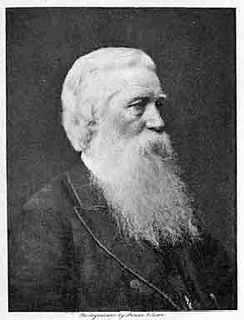
John Gibson Paton, born in Scotland, was a Protestant missionary to the New Hebrides Islands of the South Pacific. He brought to the natives of the New Hebrides education and Christianity. He developed small industries for them, such as hat making. He advocated strongly against a form of slavery, which was called "Blackbirding", that involved kidnapping the natives and forcing them to work in New Zealand and elsewhere.

In the practice of religion, a cult image is a human-made object that is venerated or worshipped for the deity, spirit or daemon that it embodies or represents. In several traditions, including the ancient religions of Egypt, Greece and Rome, and modern Hinduism, cult images in a temple may undergo a daily routine of being washed, dressed, and having food left for them. Processions outside the temple on special feast days are often a feature. Religious images cover a wider range of all types of images made with a religious purpose, subject, or connection. In many contexts "cult image" specifically means the most important image in a temple, kept in an inner space, as opposed to what may be many other images decorating the temple.
Futuna is an island in the Tafea province of Vanuatu. It is the easternmost island in the country.

Erromango is the fourth largest island in the Vanuatu archipelago. With a land area of 891.9 square kilometres (344.4 sq mi) it is the largest island in Tafea Province, the southernmost of Vanuatu's six administrative regions.

The traditional African religions or traditional beliefs and practices of African people are a set of highly diverse beliefs that includes various ethnic religions. Generally, these traditions are oral rather than scriptural and passed down from one generation to another through folk tales, songs and festivals, include belief in an amount of higher and lower gods, sometimes including a supreme creator, belief in spirits, veneration of the dead, use of magic and traditional African medicine. Most religions can be described as animistic with various polytheistic and pantheistic aspects. The role of humanity is generally seen as one of harmonizing nature with the supernatural. According to the author Lugira, "it is the only religion that can claim to have originated in Africa. Other religions found in Africa have their origins in other parts of the world."

St. Paul's Church is an evangelical Anglican church in downtown Halifax, Nova Scotia, within the Diocese of Nova Scotia and Prince Edward Island of the Anglican Church of Canada. It is located at the south end of the Grand Parade, an open square in downtown Halifax with Halifax City Hall at the northern end.
Anejom̃ or Aneityum is an Oceanic language spoken by 900 people on Aneityum Island, Vanuatu. It is the only indigenous language of Aneityum.
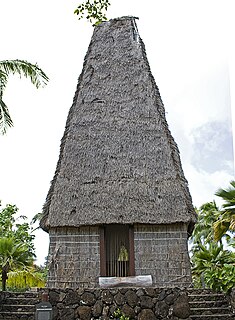
Fiji is a mixed society religiously with most people being Christian but with sizable Hindu and Muslim minorities. Religion tends to split along ethnic lines with most Indigenous Fijians being Christian and most Indo-Fijians being either Hindu or Muslim.

This article presents an overview of the culture of Vanuatu.
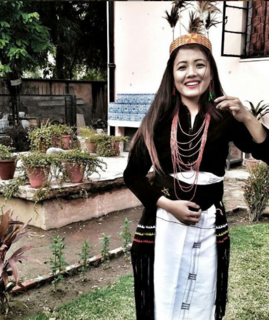
The Maring is one of the Naga ethnic group inhabited in Manipur State in North East India. Their name is derived from mei meaning fire and ring meaning to start or produce.The people of Maring tribe are called Maringa. A mainly Christian people, they inhabit mainly in Tengnoupal District and nearby areas.
John Geddie was a Scots-Canadian missionary who was known as "the father of Presbyterian missions in the South Seas." He pioneered missionary work in the New Hebrides islands, now known as Vanuatu. He became Doctor of Divinity in 1866. On December 14, 1872 he died in Geelong, Australia.

The Presbyterian Church of Vanuatu, or the Presbitirin Jyos Blong Vanuatu in Bislama, is the largest Christian denomination in Vanuatu.
References
- ↑ Cf. Rev. John Inglis, A Dictionary of the Aneityumese Language, London & Edinburgh: Williams & Norgate, 1882, p. 97.
- ↑ Rev. John Inglis, D.D. In the New Hebrides: Reminiscences of Missionary Life and Work, Especially on the island of Aneityum, from 1850 till 1877, London: T. Nelson and Sons, 1887, Ch. IV, p. 29. The text can be viewed in archive.com website: https://archive.org/stream/innewhebridesrem00ingl#page/n7/mode/2up Retrieved 2012-04-03.
- ↑ Rev. John Inglis, D.D. In the New Hebrides. Ch. IV, p. 30. Also quoted by Felix Speiser in Ethnology of Vanuatu. London: C Hurst, 1998, p. 310.
- ↑ Rev. John Inglis, D.D. In the New Hebrides. Ch. IV, p. 33.
- ↑ Rev. John Inglis, D.D. In the New Hebrides. Ch. IV, p. 32.
- ↑ Rev. John Inglis, A Dictionary of the Aneityumese Language, Introduction, p. xxiii.